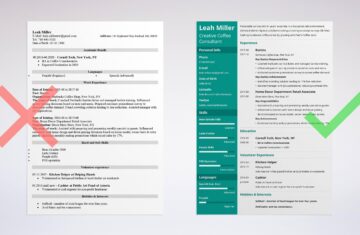In the ever-evolving professional landscape, the need for a well-crafted resignation letter cannot be overstated. Your resignation letter is not just a formality; it’s a reflection of your professionalism and can leave a lasting impression on your soon-to-be former employer. We understand the importance of this document, and in this comprehensive guide, we’ll walk you through the steps to create the perfect resignation letter that will set you apart.
1. Understanding the Purpose
Why a Resignation Letter Matters
A well-written resignation letter serves several crucial purposes. It formally announces your departure, ensures clear communication with your employer, and maintains a positive professional relationship. Moreover, it provides a written record of your resignation, which can be valuable in the future for references and employment history.
2. Crafting the Content
Structure and Format
Begin your resignation letter with a formal header that includes your contact information and the date. Address it to your immediate supervisor or the relevant authority within your organization. Follow these key components:
2.1. Greeting
Start with a polite salutation, addressing your recipient by name, e.g., “Dear [Supervisor’s Name],”
2.2. Gratitude
Express your gratitude for the opportunities and experiences you’ve had within the organization. Be sincere in your appreciation.
2.3. Announcement
Clearly state your intention to resign from your current position. Specify the date of your last working day, adhering to your notice period if applicable.
2.4. Transition
Offer assistance during the transition period. Mention your willingness to help train your replacement or wrap up any ongoing projects.
2.5. Closing
Conclude your letter on a positive note. Express your well-wishes for the company’s continued success and thank your employer again for the opportunity.
3. Tone and Language
Professionalism is Key
Maintain a professional and respectful tone throughout your resignation letter. Avoid negative or critical comments, as this document should leave a positive impression.
4. Proofreading and Editing
The Devil’s in the Details
Before finalizing your resignation letter, carefully proofread it for grammar and spelling errors. A flawless document reflects your attention to detail and professionalism.
5. Sample Resignation Letter
Dear [Supervisor's Name],
I am writing to formally announce my resignation from my position as [Your Position] at [Company Name], effective [Last Working Day, typically two weeks from the date of the letter].
I am deeply grateful for the opportunities I’ve had to grow and contribute during my time at [Company Name]. It has been a pleasure working with you and the entire team. I have learned valuable skills and experiences that will benefit me in my future endeavors.
I am committed to ensuring a smooth transition. Please let me know how I can assist in this process, whether it’s helping to train my replacement or completing any pending projects.
I am confident that [Company Name] will continue to thrive, and I wish the organization and the team all the best in the future.
Thank you again for the opportunity to be a part of [Company Name].
Sincerely,
[Your Name]
7. Personalizing Your Resignation
Tailor Your Message
When writing your resignation letter, it’s essential to personalize it to your unique situation. While the structure and format remain consistent, the content should reflect your specific experiences and contributions to the organization. Mention specific projects, achievements, or moments that have been significant during your tenure. This personal touch can leave a lasting impression and show your sincerity.
8. Handling Sensitive Situations
Resigning Gracefully
In some cases, resigning might be due to challenging circumstances or differences with your employer. Regardless of the reasons behind your decision, maintain a professional and respectful tone. Focus on your future endeavors and avoid dwelling on past issues. Your resignation letter should be forward-looking and positive.
9. Addressing Counteroffers
Stay Resolute
If your employer presents a counteroffer after receiving your resignation letter, carefully consider your options. While it may be tempting to reconsider, remember that your decision to resign likely stemmed from valid reasons. Politely and professionally decline any counteroffers, expressing your gratitude but emphasizing your commitment to your new path.
10. Communicating Internally
Coordinating with Colleagues
In addition to your formal resignation letter, it’s essential to communicate your departure internally. Inform your colleagues and coworkers in person or through a team meeting, if possible, before your departure date. This proactive approach fosters a smoother transition and maintains a positive atmosphere within the workplace.
11. Beyond the Resignation Letter
Networking and References
Your professional relationships and network are invaluable. Maintain a positive rapport with your colleagues and superiors as you depart. Secure LinkedIn connections and ask for recommendations while your contributions are still fresh in their minds. These connections can be instrumental in your future career endeavors.
12. Keeping Records
Documenting Your Journey
Maintain copies of your resignation letter, any correspondence related to your departure, and records of your contributions and achievements. These documents can be useful when updating your resume and LinkedIn profile, as well as when providing references for future job applications.
13. Final Thoughts
Embrace the Future
In the world of employment, transitions are inevitable. How you handle them can significantly impact your career trajectory. Crafting a well-thought-out resignation letter is just one aspect of leaving a job on a positive note. Maintain professionalism, gratitude, and a forward-looking perspective as you move toward new opportunities and challenges.
By following the guidance provided in this article, you have the tools to create a resignation letter that not only meets the formal requirements but also demonstrates your professionalism, gratitude, and readiness for what lies ahead. Remember, a well-executed resignation letter can be a powerful stepping stone in your career journey.
In the dynamic landscape of the professional world, your ability to navigate transitions with grace and professionalism will set you apart and open doors to exciting new chapters in your career.
Conclusion
A well-crafted resignation letter is a testament to your professionalism and can leave a positive impression as you move forward in your career. Remember that your resignation letter is a reflection of your character and can influence future references and opportunities. By following the guidelines in this guide and using the provided sample, you can create a resignation letter that not only serves its purpose but also showcases your commitment to excellence in every aspect of your professional life.
With this comprehensive guide, you’re equipped to craft a resignation letter that stands out and helps you transition to the next phase of your career with grace and professionalism.



